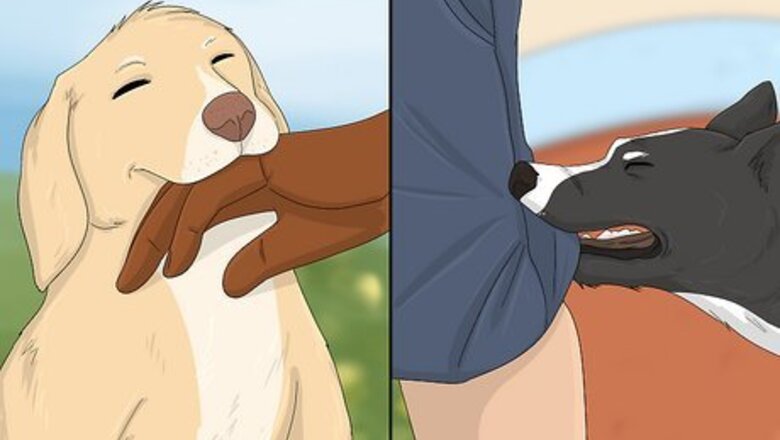
views
X
Research source
www.cdc.gov/features/dog-bite-prevention/
While a dog that nips or bites may not seem like a serious problem, a biting dog is a dangerous dog. If you own a dog that bites, you can be held financially responsible for any injuries your dog may cause. You might also be criminally liable if your dog kills someone. Fortunately, there are many things you can do to teach your dog to stop biting and become a good canine citizen. Training will take patience and time, but your well trained dog will be a joy to be around and a great member of your family.
Recognizing Why Your Dog Bites
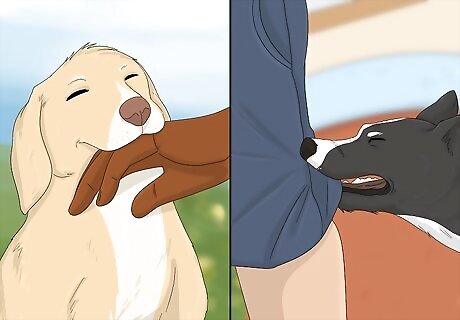
Distinguish between aggressive or playful biting. Most dogs and puppies engage in mouthing, nipping or play biting, which is normal. If this is the case, your playful dog will have a relaxed body that isn't tense or aggressive. When he nips or bites, the puppy or dog won't show teeth or bite down hard. However, if your dog is aggressively biting, his body will be stiff, he'll show his teeth, and he'll bite quickly and hard. Pay attention to your dog attitude, in addition to his body language. Chances are, you'll already have a good idea as to whether your dog is unhappy and acting out, or if he's simply playing.
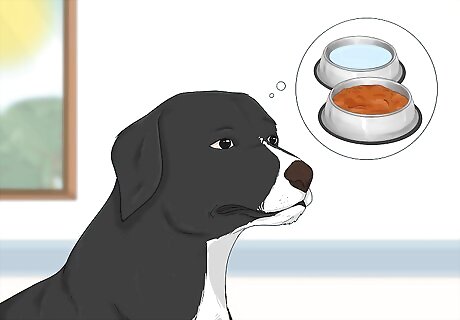
Determine why your dog bites. Dogs just don't suddenly bite. Instead, dogs bite as a reaction to a situation or feeling. You'll need to watch your dog's body language in order to figure out why he bites. It's important to determine this since you'll need to deal with your dog differently depending on whether he's biting from playfulness or aggression. Your dog may bite if he is: Hungry Scared or feels threatened Defending himself or his territory Sick or in pain Overly excited during play
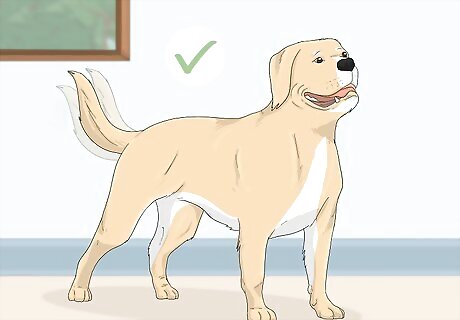
Watch your dog's mood. You can figure out your dog's mood by paying attention to his body language. Knowing how your dog is feeling will help you respond appropriately and prevent future biting. Look to see if your dog is biting and: Relaxed: Your dog will have a calm stance and relaxed facial muscles with an open mouth. His ears will be in the natural position (erect or floppy depending on the breed) or slightly forward if he's alert. He may be wagging his tail or holding it naturally and his fur will lay flat. Aggressive: Your dog's ears and tail will be erect (while the tail might slowly wag from side to side). His muscles will be tense while his fur stands up along his back. He'll show his teeth and stare directly at you or whatever is bothering him. Note that you shouldn't meet his gaze, slowly back away, and get a barrier (like a chair, door, or backpack) between you. Afraid: Your dog will cower with his ears back, his body tense, and his tail tucked between his legs. He may bite because he feels he can't flee from a frightening situation.
Stopping Aggressive Biting
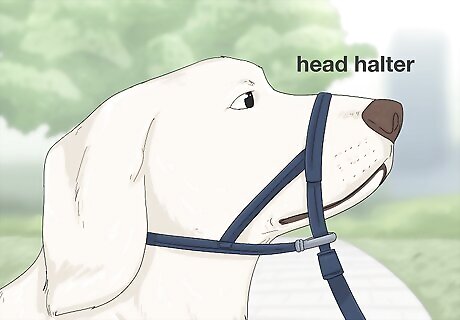
Control and supervise your dog. If your dog is aggressive or even if he bites for no apparent reason, you must get immediate control of him. Use a harness, muzzle, or head halter to prevent him from further biting. Don't let your dog go outside the house without being on a leash and unless he's accompanied by a responsible adult holding the handle. You should never leave a dog that bites alone with children. In fact, your dog shouldn't be around children outside the immediate household until his biting is stopped.
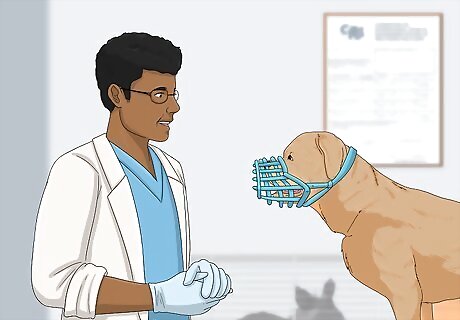
Get your dog checked by the veterinarian. Once you've gotten control of your dog, you need to take him to the vet for an exam and behavioral consultation. Your vet may find that the dog is suffering from a medical condition (like brain dysfunction from stroke or old age) or is in pain (from arthritis or an injury). If your vet determines a cause for the grumpiness and biting, treatment may be recommended that can stop the biting. If there's no medical explanation for the biting, ask your veterinarian to determine if the dog may be acting out of fear or because he's defending his belongings.
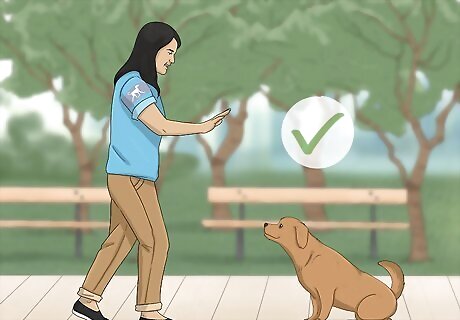
Find a professional trainer for your dog. Your vet may be able to recommend an animal behavioral specialist. The specialist can work with your dog to make sure he's properly trained. Working with a professional trainer is especially important if there was a human injury involved, since you most likely will not be able to correct the biting behavior on your own. Make sure the professional you work with has been certified to work with aggressive animals. Look for a Certified Applied Animal Behaviorist (CAAB or ACAAB), a veterinary behaviorist (Dip ACVB) or a Certified Professional Dog Trainer (CPDT) in your area.
Stopping Playful or Fearful Biting
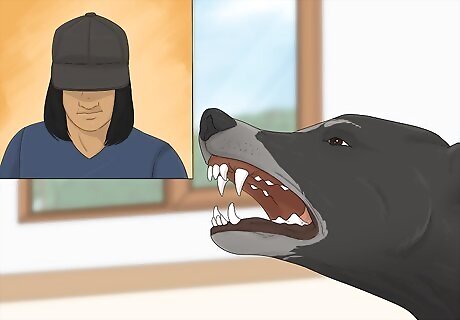
Desensitize your fearful dog. You can expose your dog to less intense versions of whatever is scaring him. Gradually, increase the intensity of the situation to make him become comfortable with what he fears. Make sure you start in small amounts, with short exposure times before increasing them. Your dog should become comfortable with each new exposure. For example, if your dog is scared of men in hats, let him look through a window or a glass door at man with a hat in your yard (you may have to enlist the help of a friend). The person should just be doing simple things like sitting and reading or standing across the street. When your dog acts calm despite the presence of the feared object, reward him. Then allow the person to move a bit closer and repeat the praise. You may need to do this over a period of weeks or even months to retrain your dog.
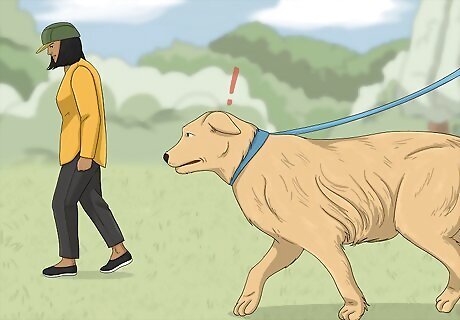
Let your dog confront his fear. As much as you may want to help your dog work through his fear, you need to let him work through it on his own. Don't cuddle or reassure your dog while desensitizing him. You can keep treats around to reward your dog for good behavior. You should also keep him on a leash in case he reacts poorly and you need to control him. For example, if your dog is scared of men in hats, but hasn't run away when watching a man in a hat, have the man gently toss a few treats towards your dog. This way, he knows the man isn't a threat. Eventually, your dog should grow to accept the man and he may even enter the same room as your dog. Then, the man can hand feed your dog treats. Make sure the person in the hat knows not to offer the dog a treat when the dog is acting fearfully or barking, as this will reward and reinforce the bad behavior.
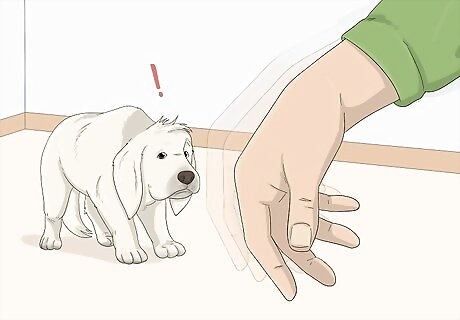
Teach your dog bite inhibition. If your puppy or dog starts mouthing, nipping, or biting while you're playing, give a high pitched yelp. At the same time, let your hand go limp and stop playing. This will startle your dog and he should stop mouthing your hand. Immediately reward him when he backs off and start playing again. Repeat this every time he nips or bites so he associates biting with lack of attention. Most dogs learn bite inhibition as puppies when they played with their littermates. If a puppy bites another puppy too hard, the bitten pup will yelp loudly startling the biting puppy. This teaches the puppy good canine citizenship.
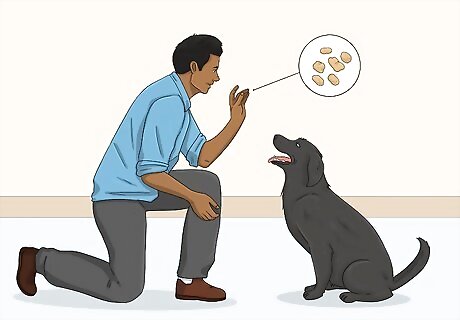
Control your dog by teaching basic commands. You can curb your dog's biting behavior by teaching basic commands like "sit," "down," "stay," "look," and "come." Train your dog every day until he's mastered them. Break up the sessions into two 10 minute training periods and only work with your dog when he's relaxed. You can then use these commands to control your dog if he's ever off leash and starts to act up. Be consistent when teaching commands and use positive reinforcement like praise and rewards. Never punish or hit your dog, which will just reinforce negative behavior and make him fear you. Practice in a calm environment (fenced in yard, quiet room in the house) and be patient. If you find you can't train, enroll your dog in obedience classes.
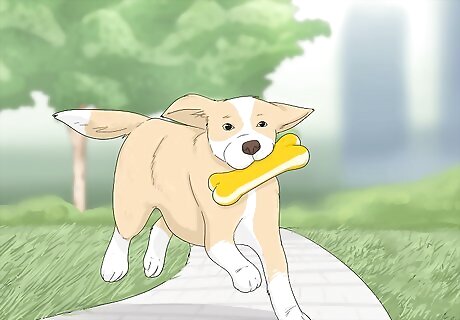
Get your dog plenty of exercise and stimulation. Try to take your dog for three or four long walks throughout the day. This will get your dog outside and give him a chance to burn off steam and energy. You can also stimulate him, especially if you're gone through the day, by giving him sturdy rubber treat or food dispensing toys that can be filled with kibble or peanut butter. Your dog will spend time biting the toy to get to the treats which also helps release his energy. If you can't take your dog for walks during the day, consider hiring a dog walker or putting your dog into doggy daycare. Walks or being at a daycare will also stimulate him mentally with new sights, smells, and sounds.
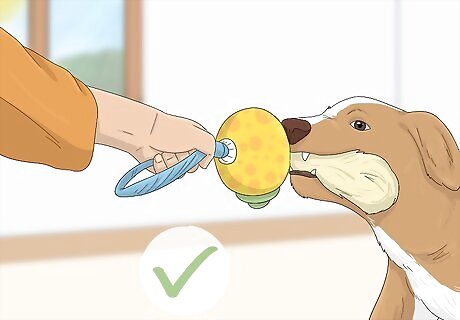
Redirect your dog's attention. Redirection is a useful behavior to learn to prevent a variety of unwanted behaviors. When you notice your dog starting to mouth or bite, redirect his attention towards something more desirable like a toy, treat, or activity. For example, if your dog is getting mouth, play tug-of-war. Or, take his mind off of biting by playing fetch. Do not try to redirect a dog that is aggressively biting. This will just cause redirected aggression which can be unpredictable and dangerous. If you have taught your dog the "look" or "watch me" command, use this to bring your dog's attention to you. This may diffuse the situation. If you see something in the distance that you know your dog reacts to, try circling around it as opposed to approaching it head-on, which is more confrontational.



















Comments
0 comment